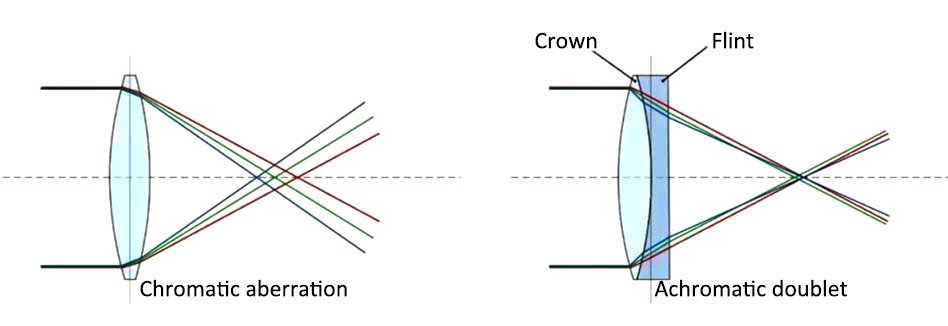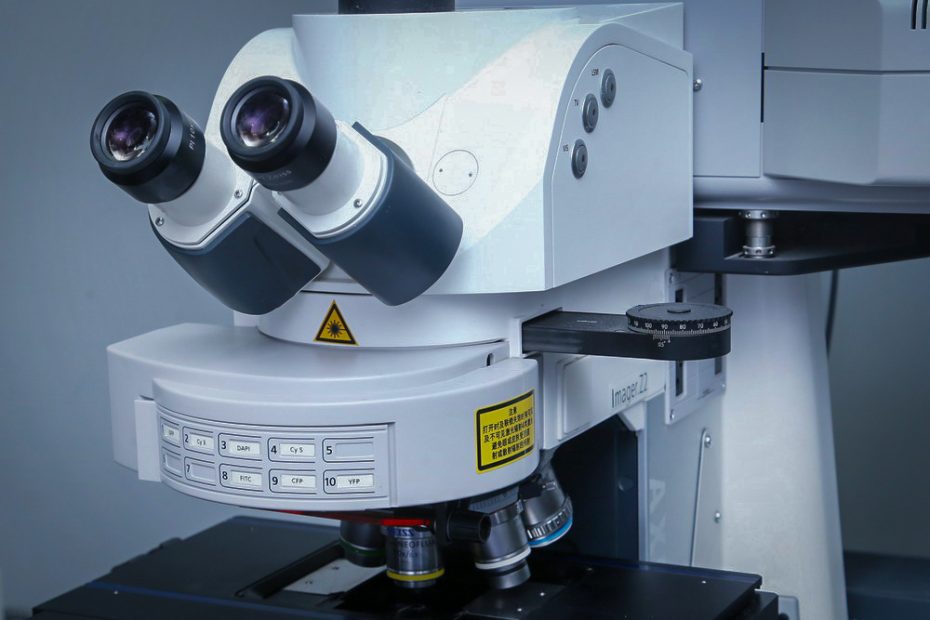A microscope is an optical instrument composed of a lens or a combination of several lenses, and it is a sign that human beings have entered the atomic age.
A microscope is an instrument mainly used to magnify tiny objects that can be seen by the human naked eye. Microscopes are divided into optical microscopes and electron microscopes.
Resolution is the limit distance that the microscope optical system can distinguish the details of the object.
The current optical microscope can magnify the object by 1600 times, and the minimum limit of resolution reaches 1/2 of the wavelength. The length of the mechanical tube of the domestic microscope in China is generally 160 mm.
Factors that affect microscope resolution are:
1. Color difference
Chromatic aberration is a serious defect of lens imaging, which occurs when polychromatic light is the light source, and monochromatic light does not produce chromatic aberration. White light is composed of seven kinds of red, orange, yellow, green, blue, blue, and purple. The wavelengths of various lights are different, so the refractive index when passing through the lens is also different. In this way, a point on the object side may form a color spot on the image side. the
Chromatic aberration generally includes position chromatic aberration and magnification chromatic aberration. Positional chromatic aberration makes the image appear blurred and blurred at any position. The magnification chromatic aberration makes the image have colored fringes.

2. Spherical difference
Spherical aberration is the difference in the monochromatic phase of on-axis points due to the spherical surface of the lens. The result of spherical aberration is that after a point is imaged, it is no longer a bright spot, but a bright spot with a bright center and gradually blurred edges. Thus affecting the image quality. the
The correction of spherical aberration is usually eliminated by lens combination. Since the spherical aberration of convex and concave lenses is opposite, convex and concave lenses of different materials can be glued together to eliminate them.
In the old model microscope, the spherical aberration of the objective lens is not fully corrected, and it should be matched with the corresponding compensating eyepiece to achieve the correcting effect. Generally, the spherical aberration of new microscopes is completely eliminated by the objective lens.
3. coma
Coma is a monochromatic aberration at an off-axis point. When an off-axis object point is imaged by a large-aperture beam, the emitted beams pass through the lens and do not intersect at one point, then the image of a light point will be in the shape of a comma, which is shaped like a comet, so it is called “coma aberration”. the
4. Astigmatism
Astigmatism is also the off-axis point monochromatic phase difference that affects sharpness. When the field of view is large, the object point on the edge is far away from the optical axis, and the beam tilts greatly, causing astigmatism after passing through the lens.
Astigmatism makes the original object point become two separated and perpendicular short lines after imaging, and after synthesis on the ideal image plane, an elliptical spot is formed. Astigmatism is eliminated through complex lens combinations.
5. Field song
Field curvature is also called “field curvature”. When the lens has field curvature, the intersection point of the entire beam does not coincide with the ideal image point. Although a clear image point can be obtained at each specific point, the entire image plane is a curved surface.
In this way, the whole phase surface cannot be seen clearly during the mirror inspection, which makes it difficult to observe and take pictures. Therefore, the objectives of research microscopes are generally plan objectives, which have been corrected for field curvature. the
6. Distortion
In addition to the curvature of the field, the various phase differences mentioned above affect the sharpness of the image. Distortion is another phase difference in nature, the concentricity of the beam is not destroyed. Therefore, the sharpness of the image is not affected, but the image is compared with the original object, causing distortion in shape. the
(1) When the object is located beyond the double focal length of the object side of the lens, a reduced inverted real image will be formed within the double focal length of the image side and outside the focal point;
(2) When the object is located on the double focal length of the object side of the lens, an inverted real image of the same size is formed on the double focal length of the image side;
(3) When the object is within twice the focal length of the lens object side and outside the focal point, a magnified inverted real image will be formed outside the double focal length of the image side;
(4) When the object is located at the focal point of the lens object, the image cannot be imaged;
(5) When the object is within the focal point of the lens object side, no image is formed on the image side, and a magnified upright virtual image is formed on the same side of the lens object side as it is farther from the object.
Resolution The resolution of a microscope refers to the minimum distance between two object points that can be clearly distinguished by the microscope, also known as the “discrimination rate”. The calculation formula is σ=λ/NA where σ is the minimum resolution distance; λ is the wavelength of light; NA is the numerical aperture of the objective lens. The resolution of the visible objective lens is determined by two factors: the NA value of the objective lens and the wavelength of the illumination source. The larger the NA value, the shorter the wavelength of the illumination light, and the smaller the σ value, the higher the resolution. To increase the resolution, i.e. reduce the value of σ, the following measures can be taken:
(1) Reduce the wavelength λ value and use a short-wavelength light source.
(2) Increase the medium n value to increase the NA value (NA=nsinu/2).
(3) Increase the aperture angle u value to increase the NA value.
(4) Increase the contrast between light and dark.
